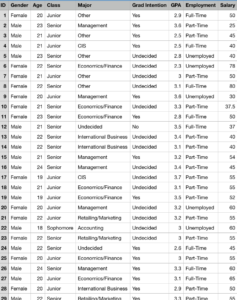In the hustle and bustle of everyday communication, there are times when you need to convey a message without requiring a response. This is where a “no action required” email template comes in handy. These templates provide a clear and concise way to deliver information to recipients without expecting them to take any immediate action.
Whether you’re notifying customers of a service update, sharing company news, or simply acknowledging receipt of an email, a no action required email template can streamline your communication process and ensure that your message is received and understood without creating unnecessary workload for your recipients.
Fine-tuning Your No Action Required Email Template
Crafting an effective no action required email template requires careful consideration. Here are some key elements to keep in mind:
**Subject Line:** The subject line should clearly indicate that no action is required. Use phrases like “FYI,” “No Action Required,” or “For Your Information.” Avoid vague or misleading subject lines that may prompt recipients to open the email expecting a call to action.
**Opening Paragraph:** Start the email with a brief and informative sentence that explains the purpose of the email without creating a sense of urgency. Avoid using phrases like “Please read” or “Attention required.”
**Body Paragraphs:** Provide the necessary information in clear and concise language. Use bullet points or numbered lists to organize the content and make it easy to read. Avoid jargon or technical terms that may confuse recipients.
**Closing Paragraph:** End the email with a polite and professional closing, such as “Thank you for your time” or “We hope you find this information helpful.” Avoid using phrases like “Please let us know if you have any questions” or “Please confirm receipt of this email,” as these imply a required action.
Additional Considerations for No Action Required Emails
In addition to the template itself, there are a few other considerations to keep in mind when sending no action required emails:
**Frequency:** Avoid sending too many no action required emails, as this can clutter recipients’ inboxes. Consider using a digest or newsletter format to send updates and announcements less frequently.
**Segmentation:** If possible, segment your email list based on recipient interests and preferences. This allows you to send targeted no action required emails that are more relevant to each recipient.
**Personalization:** Although a no action required email template provides a standardized format, consider adding a personal touch by addressing the recipient by name or referencing previous interactions.
**Tracking and Evaluation:** Track the open rates and click-through rates of your no action required emails to gauge their effectiveness. This data can help you refine your templates and ensure that your messages are being received and read.
Conclusion
A well-crafted no action required email template can be a valuable tool for streamlining communication and ensuring that important information is delivered without creating unnecessary workload for recipients. By following the guidelines outlined above, you can create templates that are clear, concise, and effective.
Remember, the goal of a no action required email is to provide information without expecting a response. By using a professional and informative template, you can ensure that your messages are received and acknowledged, while respecting the time and attention of your recipients.

